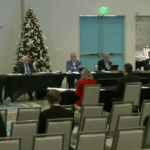In the teeth of the first true hard market in nearly two decades, evidence accumulated by the Surplus Lines Stamping Office of Texas confirms the surplus lines insurance market is successfully fulfilling its primary role—providing coverage for those insureds unable to obtain insurance from licensed carriers.
Today, disruptions abound in both property and liability insurance. Commercial markets for medical malpractice, nursing home liability, habitational property and residential contractors coverage have all tightened significantly and are in certain cases virtually unattainable. The Texas homeowners market has become a political issue in both the gubernatorial and attorney general elections, as insurers restrict coverage, raise rates or non-renew policies in response to years of poor underwriting results (exacerbated by recent colossal growth in mold claims). Following a series of major insurer failures, the solvency of markets rightfully alarms agents, policyholders and regulators. This environment becomes even more tenuous as we ride the extended tail of September 11, 2001, claims and investment losses arising from corporate accounting scandals and bankruptcies. Formerly sound carriers such as Reliance, Frontier and Legion are gone. Business once eagerly pursued by the admitted market is now rejected at any price.
It is here that the surplus lines market steps in, its value truly evident. Yes, surplus lines premiums and policy counts are up sharply in Texas—but this is merely proof that the market is working. Surplus lines—the “relief valve”—is making it possible for Texas businesses to find insurance coverage, and through reputable, sound insurers. This is not to say that insolvencies are impossible, for in a competitive, healthy surplus lines market there can and will be insurers that fail, but no more so than among admitted carriers.
Texas market data
In 2001, Texas remained the second largest surplus lines market in the U.S., with just over $1.5 billion in direct written premium. Through June of 2002, the Stamping Office has already processed more than $1.1 billion in surplus lines premium—an increase of more than 69 percent over the same period last year. We now project that total Texas premium for 2002 should approach $2.25 billion.
For the first half of 2002, the number of surplus lines policies reported to the Stamping Office totaled more than 191,000, an increase of more than 13 percent over last year. While more risks are being exported, as any Texas wholesaler facing a mountain of applications will tell you, the real story is in the rate increases, as shown in the following data:
| Year |
Policy Count
|
Average $/Policy
|
| 1996 |
282,695
|
$3,871
|
| 1997 |
309,271
|
$3,456
|
| 1998 |
313,979
|
$3,208
|
| 1999 |
336,702
|
$3,057
|
| 2000 |
347,708
|
$3,248
|
| 2001 |
350,420
|
$4,304
|
| 2002 (thru June) |
191,636
|
$5,814
|
The average premium for all policies processed just in the month of June exceeded $6,660.
However, substantive increases in policy counts or average premium per policy varied by line of business. The following illustrates the five lines with the largest number of policies processed by the Stamping Office, comparing data through June of this year with the same period last year.
|
June 2002
|
June 2002
|
|||
| Line |
Policies
|
Change
|
Avg.$/Policy
|
Change
|
| Other Liability |
72,154
|
2%
|
$6,759
|
59%
|
| Fire/Allied Lines |
63,886
|
-1%
|
$5,333
|
107%
|
| Homeowners |
40,405
|
29%
|
$818
|
32%
|
| Products Liability |
30,149
|
24%
|
$606
|
50%
|
| Credit |
21,998
|
47%
|
$1,140
|
-42%
|
The increase in homeowners business will alarm some, including state regulators, who prefer to see all personal lines insurance with guaranty fund protection. While it is true there has been a large flow of homeowners business into the surplus lines market as the large admitted insurers restrict their writings, the surplus lines market share for this line still represents less than two percent of the entire Texas HO market.
Insurer data
As one of our three primary responsibilities, the Stamping Office continues to scrutinize the financial and operating condition of every surplus lines insurer. We do have concerns regarding some—we have already made more negative recommendations against eligibility to TDI this year than we made during all of 2001. However, we have also upgraded 15 priority ratings for insurers (while downgrading another 15). Overall, marginal insurers continue to drop off the list and out of the Texas market. There are currently 159 insurers eligible to write surplus lines business, a net decrease of two since the beginning of the year. Last year was notable in that not one new insurer applied for eligibility in Texas. This year there have already been seven new submissions, an indication insurers desire to enter the Texas market and reap the benefit of higher rates.
To date, Brian Wilds, director of Financial Analysis and Accounting at the Stamping Office, has analyzed 2001 results for 90 insurers (mostly U.S. companies). As of the end of last year the average capital and surplus for those insurers had risen to $67.0 million, an increase of nearly 9 percent (median $30.2 million, up 6 percent). Cash flow from operations had increased significantly—the average was $16.8 million (up 175 percent) and the median was $2.3 million (up 72 percent). While these 90 insurers showed an overall underwriting loss for 2001 (average -$5.9 million, median -$1.0 million), the typical insurer was still able to show an overall profit, with a median net income of $1.2 million. Texas writings represented 12 percent of the average insurer’s total book.
AM Best’s / NAPSLO’s annual review of the surplus lines market affirms that the overall solvency of surplus lines companies remains strong. However, there is little question we will see more insurers unable to survive the effects of prolonged underwriting losses, declines in both investment income and capital gains, years of under-reserving, and poor business plans. For these insurers, increasing rates will come too late. Moreover, a “flight to quality” appears to continue. At the end of 2001, fully two-thirds of the Texas market was held by Lloyds of London and surplus lines members from the top 10 U.S. insurance groups.
A note on the Stamping Office
Since its creation by the Texas Legislature in 1987, the Surplus Lines Stamping Office has worked to promote an efficient, stable and financially strong surplus lines market. With the strong support of the Texas Surplus Lines Association, the Stamping Office was established to encourage agents and insurers to comply with the often-obtuse surplus lines laws and regulations of the state and also to assist the Texas Department of Insurance and the Comptroller in oversight of the market. So, we work “both sides of the street.” To be successful, though, we cannot be perceived as talking from both sides of our mouth. It is imperative that we maintain a high level of credibility and trust from both the surplus lines industry and from state regulators as we carry out our primary responsibilities—financial analysis of insurers, review of all surplus lines policies, and education.
Today we believe the Stamping Office stands as an effective, professional, customer-service-oriented organization. For example, through May of this year, our average cost of processing a surplus lines policy was $6.21 (and $3.41 if measured solely by salary and benefit expenses, to remove the effects of amortization and depreciation). The stamping fee charged on Texas surplus lines policies lowered to .15 percent (.0015) effective July 1, is again the lowest in the nation. Through our seminars (always free!), monthly bulletins, quarterly newsletters and in-depth web site, we have grown to be an important resource for many. Last year the Stamping Office web site (www.slsot.org) had more than 452,000 “hits”; this year we anticipate in excess of 550,000.
As a final note, the Stamping Office is on schedule in a major project to develop a system for the electronic filing of policy data. The e-filing system, scheduled to be on-line in the fall of 2003, will eliminate the cumbersome and archaic filing of hard-copy policies for those surplus lines agents electing to use it. We believe the potential for improved efficiency and more cost-effective regulation is enormous, both for agents and for the Stamping Office.
Philip R. Ballinger, CPCU, ASLI, is the general manager of the Surplus Lines Stamping Office of Texas.
Topics Carriers Texas Excess Surplus Homeowners
Was this article valuable?
Here are more articles you may enjoy.


 After Years of Pushing Rate Hikes, Florida’s Citizens Now Wants HO Rate Decrease
After Years of Pushing Rate Hikes, Florida’s Citizens Now Wants HO Rate Decrease  Brookfield Targets Global Dominance in P/C Insurance Coverage
Brookfield Targets Global Dominance in P/C Insurance Coverage  California Again Delays Wildfire Protection Rules for Homes
California Again Delays Wildfire Protection Rules for Homes  Baldwin Group to Buy CAC Group for About $1B in Cash and Stock
Baldwin Group to Buy CAC Group for About $1B in Cash and Stock 


